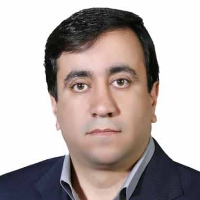Separation of geochemical anomalies by concentration-area and concentration-number methods in the Saqez 1:100,000 sheet, Kurdistan
Author(s):
Article Type:
Research/Original Article (دارای رتبه معتبر)
Abstract:
Regional exploration and identification of anomalies can be done by geochemical data resulted from stream sediments. In this paper, fractal methods of concentration-number and concentration-area were used for regional studies, and abnormalities of elements including gold, arsenic, bismuth and mercury were studied. Statistical processing of these elements took place with the help of 1063 samples of stream sediments in the Saqez 1:100,000 sheet (Kurdistan Province). The elements were analyzed in the laboratory of the Geological Survey and Mineral Exploration of Iran by ICP-OES method and Au element was analyzed by Emission Spectrograph method. According to the position of geology, existing structures and the dominant rock type, the comparison between the map prepared methods of concentration-number and concentration-area was conducted in Saqez sheet. In general, the results of the two methods showed that in the south, southwest, center and west of the region, the concentration of these elements is increased, and presence of ore promising areas is high in these areas. Concentration-number method showed a good overlap with concentration-area method; making extensive geochemical halos and encompassing known ores of Qolqoleh, Kervian and Qabghlojeh, it follows the expected process of mineralization in Sanandaj-Sirjan zone.
Keywords:
Language:
English
Published:
Iranian Journal of Earth Sciences, Volume:11 Issue: 3, July 2019
Pages:
196 to 204
https://magiran.com/p2038033
مقالات دیگری از این نویسنده (گان)
-
Mineralogy and geochemistry of biotite in Dalayon area (South of Borujerd-Iran)
*
Geosciences Scientific Quarterly Journal, -
Mineral geochemistry and mineralogy of Masteroon pegmatite (North of Aligudarz - Lorestan Province)
Esmaeil Darvishi, Seyedvahid Shahrokhi*
Iranian Journal of Crystallography and Mineralogy,


